Archives
- By thread 5224
-
By date
- June 2021 10
- July 2021 6
- August 2021 20
- September 2021 21
- October 2021 48
- November 2021 40
- December 2021 23
- January 2022 46
- February 2022 80
- March 2022 109
- April 2022 100
- May 2022 97
- June 2022 105
- July 2022 82
- August 2022 95
- September 2022 103
- October 2022 117
- November 2022 115
- December 2022 102
- January 2023 88
- February 2023 90
- March 2023 116
- April 2023 97
- May 2023 159
- June 2023 145
- July 2023 120
- August 2023 90
- September 2023 102
- October 2023 106
- November 2023 100
- December 2023 74
- January 2024 75
- February 2024 75
- March 2024 78
- April 2024 74
- May 2024 108
- June 2024 98
- July 2024 116
- August 2024 134
- September 2024 130
- October 2024 141
- November 2024 171
- December 2024 115
- January 2025 216
- February 2025 140
- March 2025 220
- April 2025 233
- May 2025 239
- June 2025 303
- July 2025 36
-
Tech talent tectonics: Ten new realities for finding, keeping, and developing talent
the Daily read
Don't miss out .
Share this email 



AN ARTICLE A DAY, PICKED BY OUR EDITORS 
Are you feeling the heat when it comes to hiring for tech talent? You’re not alone—61 percent of HR professionals view hiring developers as their biggest challenge, according to a McKinsey survey. Indeed, the Great Attrition and remote work have made it even harder for companies to hire and retain for technical roles. So what can companies do to address this reality? Stay ahead of the competition by checking out a new article that outlines the ten things to keep in mind to find, retain, and grow tech talent. — Joyce Yoo, digital editor, New York 
Tech talent tectonics: Ten new realities for finding, keeping, and developing talent Large incumbents can compete successfully for tech talent—but only if they’re ready to completely rethink their entire HR approach. Tech talent think and act differently. Don't miss out 

Quote of the Day “As we work with the population who are poor and move them forward, we have to not lean into meritocracy. We have to lean into the individuals themselves.” —Tom Vozzo, CEO of Homeboy Industries, on the concept of merit-driven culture in a recent episode of Author Talks 
Chart of the Day 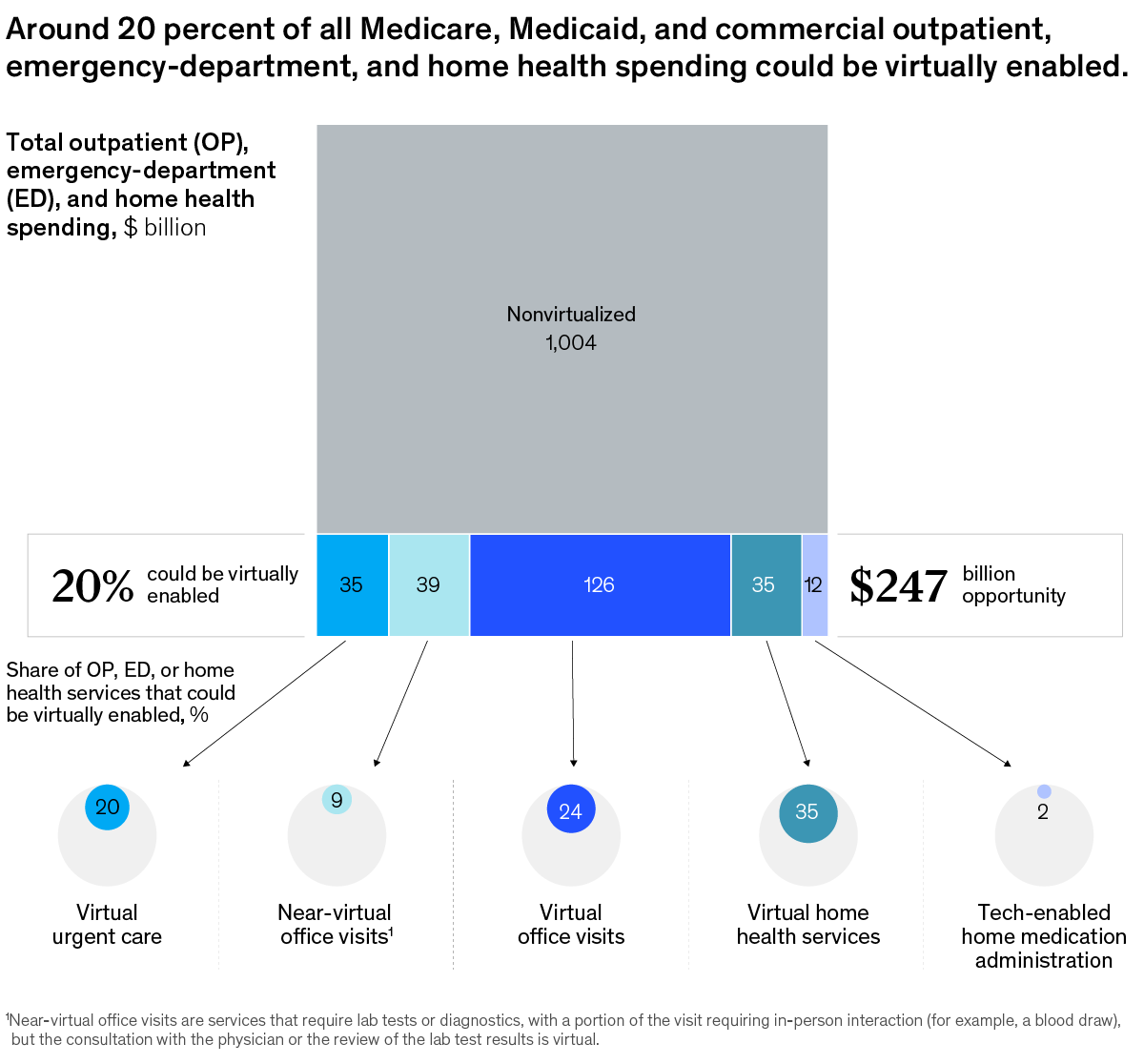
See today’s chart 
Also New 

How advanced analytics can address agricultural supply chain shocks Building automated supply chain planning systems to address global shocks could lead to significant cost savings for agricultural organizations. Brace for impact 


Navigating inflation: A new playbook for CEOs Few chief executives have faced the challenge of leading a company through an inflationary spike like today’s. Lessons from strong leaders and bold action can help CEOs make the decisions that only they can make. Make smart moves 


How Volkswagen board member Hiltrud Werner finds resilience Resilience is top of mind for Hiltrud Werner in her role as a member of Volkswagen’s board of management as COVID-19, new regulations, and the energy transition test the automaker’s mettle. Keep driving forward 


Follow our thinking 



Share these insights Did you enjoy this newsletter? Forward it to colleagues and friends so they can subscribe too.
Was this issue forwarded to you? Sign up for it and sample our 40+ other free email subscriptions here.This email contains information about McKinsey’s research, insights, services, or events. By opening our emails or clicking on links, you agree to our use of cookies and web tracking technology. For more information on how we use and protect your information, please review our privacy policy. You received this email because you subscribed to the Daily Read newsletter. Manage subscriptions | Unsubscribe Copyright © 2022 | McKinsey & Company, 3 World Trade Center, 175 Greenwich Street, New York, NY 10007
by "McKinsey Daily Read" <publishing@email.mckinsey.com> - 06:19 - 18 Apr 2022 -
Navigating inflation: A new playbook for CEOs
McKinsey&Company
Make smart moves .
Share this email 



New from McKinsey Quarterly 
Navigating inflation: A new playbook for CEOs Few chief executives have faced the challenge of leading a company through an inflationary spike like today’s. Lessons from strong leaders and bold action can help CEOs make the decisions that only they can make. Make smart moves 



Related Reading 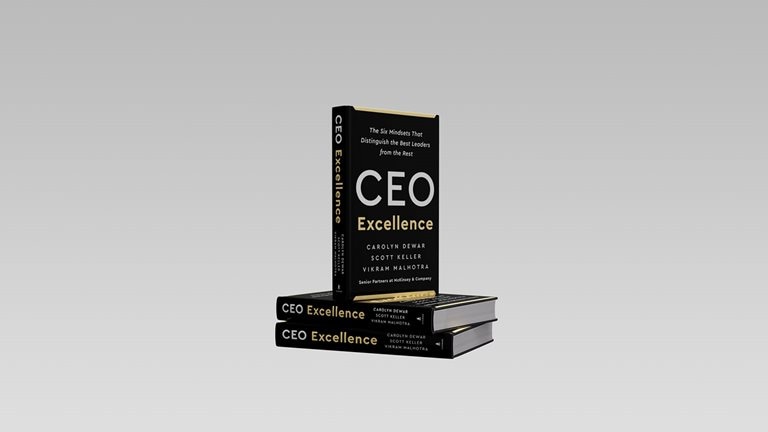
Leadership lessons from the world’s best CEOs 

Five ways to ADAPT pricing to inflation 


Follow our thinking 


McKinsey Insights - Get our latest
thinking on your iPhone, iPad, or Android


Share these insights Did you enjoy this newsletter? Forward it to colleagues and friends so they can subscribe too.
Was this issue forwarded to you? Sign up for it and sample our 40+ other free email subscriptions here.This email contains information about McKinsey’s research, insights, services, or events. By opening our emails or clicking on links, you agree to our use of cookies and web tracking technology. For more information on how we use and protect your information, please review our privacy policy. You received this email because you subscribed to our McKinsey Quarterly alert list. Manage subscriptions | Unsubscribe Copyright © 2022 | McKinsey & Company, 3 World Trade Center, 175 Greenwich Street, New York, NY 10007
by "McKinsey Quarterly" <publishing@email.mckinsey.com> - 10:46 - 18 Apr 2022 -
A leader’s guide to enhanced team development
Leading Off
In sync .
Share this email 



ESSENTIALS FOR LEADERS AND THOSE THEY LEAD 
Throughout the pandemic and certainly in its early days, leaders and their teams operated mostly in crisis mode. Now, as the business environment begins to normalize, it may be a good time to pull back and take the pulse of your team. Do your team members wish to take on new challenges? Is your current team structure still working, or should you try something different? As companies organize for the future, leaders are tasked with building flexible, dynamic teams that can tackle fast-moving disruptions. This week, let’s explore ways to ensure that your team is up to the task. Read on to learn the strategies of top executives—as well as those of renowned rock musicians. AN IDEA 
Prepare your team for the information revolution Many of us are familiar with the cautionary fairy tale of Rip Van Winkle, who falls asleep for 20 years and misses the American Revolution, waking up to a world he doesn’t recognize. Employees who are resistant to change risk being left behind as today’s workplace revolution advances. A top priority for leaders is to ensure that their teams are aware of and adapt to four macro trends that organizations can expect to encounter in the future. Practical ways to do this include helping your team switch from a static performance mindset to a learning mode, promoting connectivity and engagement at all levels, and creating an environment that supports curiosity and innovation. 
A BIG NUMBER 4 That’s the number of important areas in which teams need to develop knowledge, skills, and behaviors. It is no longer enough to focus solely on building job-level skills; instead, educate your team on four key quadrants that drive good performance at most organizations—how the business makes money, how it is managed, the value that individuals add, and effective day-to-day behaviors. For example, one company asked its top 100 leaders to fill out a one-page form to describe the initiatives within their units, how they aligned with the organizational agenda, and the expectations for success. Leaders then used the one-pagers to communicate this information to their teams during team meetings. 

A QUOTE “What good can come from employees spending valuable work time chatting about a major sporting event or blockbuster film?” Plenty, says Ron Friedman, author of this Harvard Business Review article on the five things that high-performing teams do differently. Friedman points out that the best teams spend 25 percent more time discussing nonwork matters with their colleagues, forging deep relationships and connections—essential to succeeding as a team. Noting that the desire to feel connected to others “has always been the trickiest for organizations to cultivate,” he adds that even during the pandemic, the top teams found ways to keep social connections going. To develop and maintain a strong team, McKinsey’s Leta Applegate, who leads a high-performing legal team, recommends showing an interest in colleagues and connecting as a group and individually. 
A SPOTLIGHT INTERVIEW 
A powerful tactic to nurture individual and team development is to apply the S-curve of learning, according to Whitney Johnson, CEO of the growth-focused human capital consultancy Disruption Advisors. In this McKinsey Author Talks interview, Johnson describes the S-curve as a path to personal and career growth. Leaders can plot team members along the curve—whether they are at the launch point, have reached the “sweet spot” of high performance, or have achieved mastery and want to move on to something else. “In general, you want to optimize your team with about 60 percent of your people in the sweet spot—this is the standard bell curve distribution—20 percent of your people at the launch point, and 20 percent of your people in mastery,” Johnson says. 
ROCK AROUND THE CLOCK 
It’s not every day that business leaders get advice from rock bands, but who better to provide tips on teamwork and collaboration? In this McKinsey article, leading rock stars share their insights on figuring out band members’ strengths and weaknesses, setting manageable objectives, communicating honestly, and cultivating humility. “In a band, you’ve got different people with different attitudes and skills coming together to achieve a common goal,” says Oracle cofounder and guitarist Ed Oates. “When it works, the outcome is greater than the sum of the parts.” Lead by developing your teams. — Edited by Rama Ramaswami, a senior editor in McKinsey’s Stamford office 

Follow our thinking 



Share these insights Did you enjoy this newsletter? Forward it to colleagues and friends so they can subscribe too.
Was this issue forwarded to you? Sign up for it and sample our 40+ other free email subscriptions here.This email contains information about McKinsey’s research, insights, services, or events. By opening our emails or clicking on links, you agree to our use of cookies and web tracking technology. For more information on how we use and protect your information, please review our privacy policy. You received this email because you subscribed to the Leading Off newsletter. Manage subscriptions | Unsubscribe Copyright © 2022 | McKinsey & Company, 3 World Trade Center, 175 Greenwich Street, New York, NY 10007
by "McKinsey Leading Off" <publishing@email.mckinsey.com> - 03:15 - 18 Apr 2022 -
Toxic work culture is a leading cause of attrition. How can employers win back their workers?
McKinsey&Company
Start your detox .

Culture shock In the news • What’s in a name? Call it what you will—the “Great Resignation” or “Great Disruption”—the fact remains that nearly 69 million people in the US quit their jobs in 2021. A common misconception: better compensation stops worker flight. While pay and benefits are important, two-thirds of employees left their jobs in 2021 for reasons related to engagement and well-being. That means the majority of US workers are quitting because they aren’t happy with their bosses, work cultures, or work–life balance, according to Gallup’s research. [Fast Company] • Don’t you know that you’re toxic? For employers still wondering about the potential root cause of this exodus, a recent study provides one clear answer: toxic workplace culture. Researchers found that toxic culture is more than ten times likelier than compensation to predict attrition. Work toxicity encompasses a range of issues, including disrespect, dishonesty, and cutthroat competition. Employers need to figure out how toxicity shows up in their companies—and then take steps to fix it. [Market Watch] 
“People need to feel valued and supported, even when they’re not entirely sure why they’re feeling so fragile.” 
On McKinsey.com • Why it matters. Employers can seize this moment to rethink their relationships with their employees and how to win back and retain them. Part of that response involves acknowledging that employees have gone through a traumatic period and empowering them to find a way forward. One problem is that employers and workers aren’t on the same page about what’s important. While employers think that many workers quit because of inadequate pay, McKinsey research shows that workers most often say they left because they didn’t feel valued. • What’s next? Other steps employers could take to engage their workforce include restructuring compensation and adding benefits that help create better work–life balance. They can also seek talent among nontraditional sources like students or contract workers. Now, more than ever, it’s time to listen to your workers, address employee concerns, and foster a supportive culture. Check out the latest edition of McKinsey Quarterly’s Five Fifty for a five-minute briefing—or a fifty-minute deeper dive—on winning back your workers. — Edited by Kanika Punwani Win back workers 
Was this forwarded to you? Sign up here. Or send us feedback — we’d love to hear from you. 

Follow our thinking 


This email contains information about McKinsey’s research, insights, services, or events. By opening our emails or clicking on links, you agree to our use of cookies and web tracking technology. For more information on how we use and protect your information, please review our privacy policy. You received this email because you subscribed to the On Point newsletter. Manage subscriptions | Unsubscribe Copyright © 2022 | McKinsey & Company, 3 World Trade Center, 175 Greenwich Street, New York, NY 10007
by "McKinsey On Point" <publishing@email.mckinsey.com> - 11:35 - 17 Apr 2022 -
The week in charts
the Daily read
What's ahead for ICE-component suppliers, cross-border e-commerce, and more .
Share this email 



ALL THE WEEK’S DATA THAT'S FIT TO VISUALIZE 
Our Charting the path to the next normal series offers a daily chart that helps explain a changing world—during the pandemic and beyond. In case you missed them, this week’s graphics explored how ICE-component suppliers can maximize value over the next decade, how cross-border e-commerce could reach $2 trillion in merchandise value, what types of projects the Bipartisan Infrastructure Law will fund, the focus areas of M&A outperformers, and the important role of tech leaders at top-performing IT organizations. FEATURED CHART Growth engine no more? 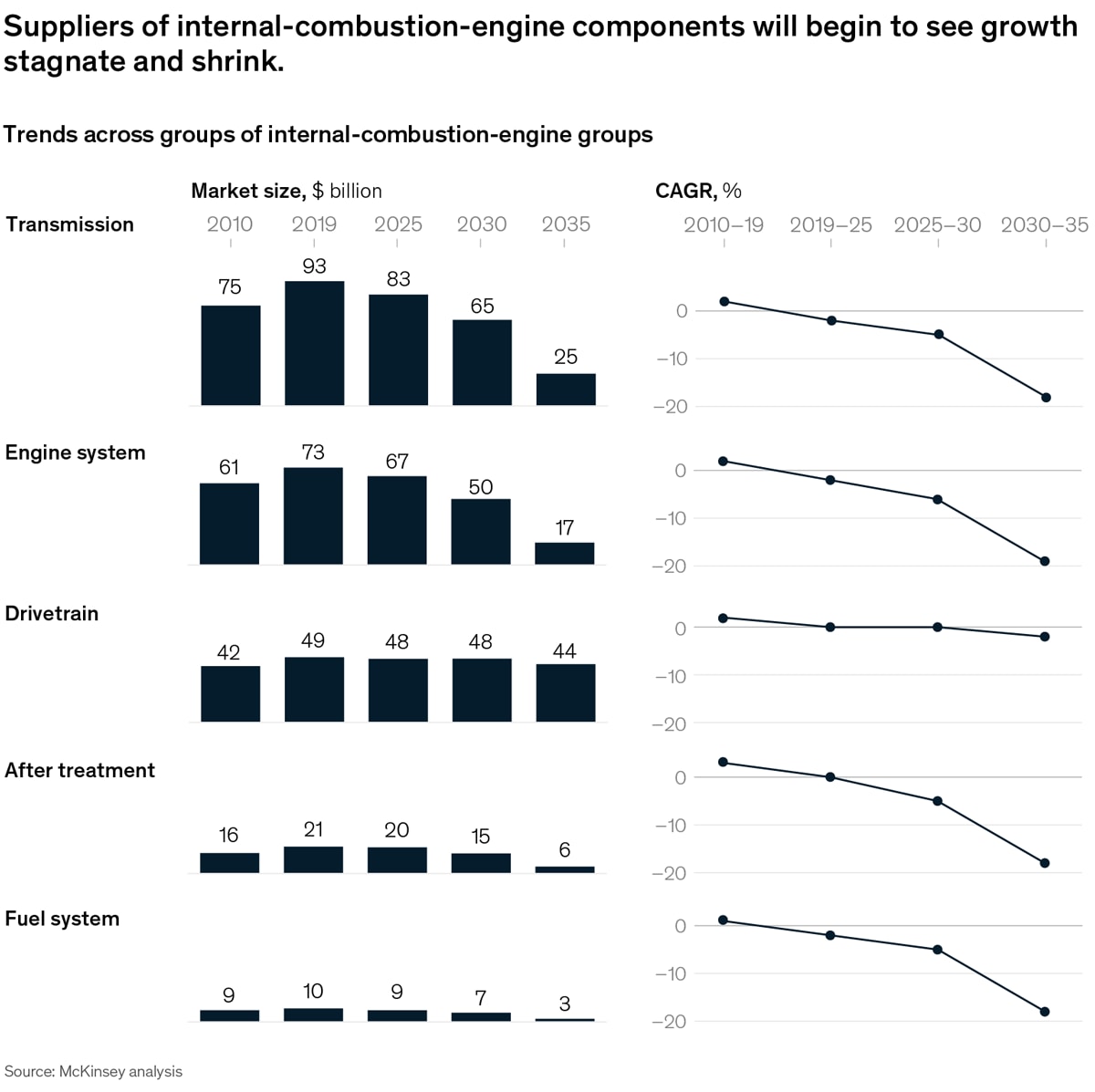
See more 



This week’s other select charts Signed, sealed, and delivered A new funding stream Big deal? Focus on revenue growth Follow the tech leaders 

Follow our thinking 



Share these insights Did you enjoy this newsletter? Forward it to colleagues and friends so they can subscribe too.
Was this issue forwarded to you? Sign up for it and sample our 40+ other free email subscriptions here.This email contains information about McKinsey’s research, insights, services, or events. By opening our emails or clicking on links, you agree to our use of cookies and web tracking technology. For more information on how we use and protect your information, please review our privacy policy. You received this email because you subscribed to The Week in Charts newsletter. Manage subscriptions | Unsubscribe Copyright © 2022 | McKinsey & Company, 3 World Trade Center, 175 Greenwich Street, New York, NY 10007
by "McKinsey Week in Charts" <publishing@email.mckinsey.com> - 03:40 - 16 Apr 2022 -
Four principles of effective storytelling on social media
McKinsey&Company
How to build a following .
Share this email 



McKinsey Classics | April 2022 
Four principles of effective storytelling on social media Scott Harrison was a successful nightclub and fashion promoter in New York, but he felt spiritually bankrupt. Leaving his business behind, he decided to serve as a photojournalist on a floating hospital that provided free medical care in poor countries. On the ship he documented the struggles of people with debilitating conditions, such as enormous tumors, cleft lips and palates, and flesh eaten by bacteria from waterborne diseases, and the work of the people who treated them. After eight months he returned to the city, but not to his former life. Harrison had learned that the absence of clean drinking water causes many medical problems, so he created a nonprofit to finance water projects in poor countries. This organization—charity: water—relies on fundraising, and Harrison’s story plays an important role in it: by using media interviews and YouTube videos to explain why he started the group, he made people “fall in love with him and his cause.” Such stories help build organizations and lead them through times of change. To learn the four principles that make these narratives effective, read our 2011 classic “The power of storytelling: What nonprofits can teach the private sector about social media.” — Roger Draper, editor, New York Learn how to tell stories on social media 



Related Reading 
The data-driven future of storytelling: MIT’s Deb Roy on the message and the medium 

AI in storytelling: Machines as cocreators 

Telling a good innovation story 

Did You Miss Our Previous McKinsey Classics? 

The future of global economic growth Will the world economy realize the opportunities to raise productivity? That depends on the ingenuity of managers and engineers and on the willingness of policy makers to make reforms. Read “A productivity perspective on the future of growth.” Understand productivity’s importance 





Follow our thinking 


McKinsey Insights - Get our latest
thinking on your iPhone, iPad, or Android

This email contains information about McKinsey’s research, insights, services, or events. By opening our emails or clicking on links, you agree to our use of cookies and web tracking technology. For more information on how we use and protect your information, please review our privacy policy. You received this email because you subscribed to our McKinsey Classics newsletter. Manage subscriptions | Unsubscribe Copyright © 2022 | McKinsey & Company, 3 World Trade Center, 175 Greenwich Street, New York, NY 10007
by "McKinsey Classics" <publishing@email.mckinsey.com> - 11:47 - 16 Apr 2022 -
Capitalizing on green growth opportunities
the Daily read
Shift to green .
Share this email 



AN ARTICLE A DAY, PICKED BY OUR EDITORS 
As more institutions step up in their commitments to achieve net-zero emissions of greenhouse gases, new business opportunities are emerging. In a net-zero future, there will be more demand for climate-friendly goods and services, and companies will tilt away from investing in high-emission assets. Explore how decarbonization is transforming portfolios, operations, supply chains, and the economy at large in a new article from McKinsey Quarterly. See why now is the time for companies to take bold action and embrace green growth opportunities. Be sure to check it out. — Joyce Yoo, digital editor, New York 
Playing offense to create value in the net-zero transition Decarbonization will reshape the economy, opening new markets and imperiling others. Now is the moment for companies to spot green growth opportunities and move boldly to take advantage. Shift to green 

Quote of the Day —See what the future holds for the aviation industry in "Opportunities for industry leaders as new travelers take to the skies" 
Chart of the Day 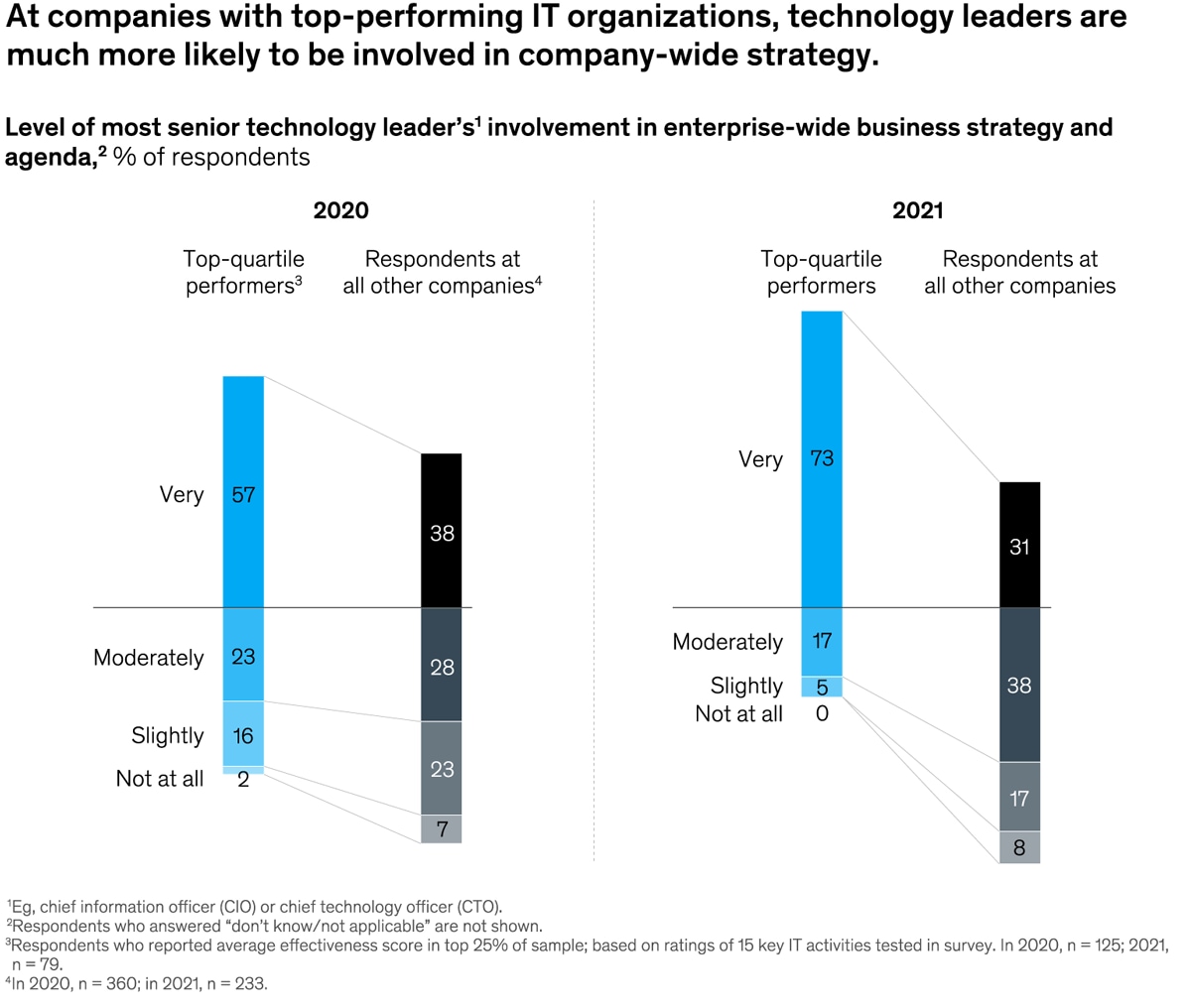
See today’s chart 
Also New 

The path to sustainable and inclusive growth Can collaboration between business, government, and society spur economic growth that benefits everyone without destroying the planet? Focus on the future 


Mastering off-price fashion in an omnichannel world The diversity of off-price channels and the emergence of online players requires fashion brands to develop clear strategies that protect their brands while reaching new consumers. Understand the trend 


The McKinsey Crossword: Thank You, Uncle Sam | No. 71 57 across: Thing that can save you money around now ... and the theme of this puzzle. Can you solve it? Play now 


Follow our thinking 



Share these insights Did you enjoy this newsletter? Forward it to colleagues and friends so they can subscribe too.
Was this issue forwarded to you? Sign up for it and sample our 40+ other free email subscriptions here.This email contains information about McKinsey’s research, insights, services, or events. By opening our emails or clicking on links, you agree to our use of cookies and web tracking technology. For more information on how we use and protect your information, please review our privacy policy. You received this email because you subscribed to the Daily Read newsletter. Manage subscriptions | Unsubscribe Copyright © 2022 | McKinsey & Company, 3 World Trade Center, 175 Greenwich Street, New York, NY 10007
by "McKinsey Daily Read" <publishing@email.mckinsey.com> - 06:49 - 15 Apr 2022 -
Full-Stack observability for iOS and Android
Sometimes you just don’t want to be sitting in front of your computer screen.
Download the New Relic One mobile app and get all the awesome data you love from New Relic—everywhere you go.
Available for both iOS and Android, the app enables you to:
- Track real-time and historical app performance
- See key transaction data and app errors
- Stay alert(ed) with push notifications
Follow the instructions to install and configure your New Relic One mobile app today.
Happy Monitoring,
MaxNew Relic
188 Spear Street, San Francisco, CA 94105 US
by "Max from New Relic" <max.francisco@newrelic.com> - 12:01 - 15 Apr 2022 -
You're all set for QlikWorld
QlikWorld 2022
Thank you for registering.
May 17-19, 2022 Thank you for
registeringVirtual Event
May 17-19, 2022

We’ll see you at QlikWorld.
Please add the event to your calendar:
On the day of the event, you can log in up to 30 minutes before the official start time to explore the virtual environment. You don’t need to download any special software, and you can join us from any internet-enabled device.
Date: May 17-19, 2022
Time: 12:00 PM – 4:30 PM SGTYour Login Details
- URL: https://ve.on24.com/vshow/Qlik_Virtual_01/lobby/18938
- Your email: info@learn.odoo.com
- Password: 2eJh97tr3
Special offer
When you register AND attend the QlikWorld Virtual Event, you'll be eligible for a $100 discount on Qlik Certification exams. Certifications will be just $150 for all QlikWorld attendees who take certifications during June 2022.Language: Once you’re logged in, please select your language in the pop-up window, or click “Change Language” at the top of the screen.
Want to test your device ahead of time?
You can test your desktop, laptop, tablet, or phone here.Questions or issues?
We’re here to help: webinars@qlik.comBy registering for QlikWorld, you understand and agree that the following details will be visible to other attendees during the event: your name, company name, industry and email address. If you do not want these details to be visible, you will need to change your profile settings at the beginning of the virtual event.


 QlikTech Singapore Pte Ltd. | 9 Temasek Boulevard, #27-01/03 Suntec Tower Two | Singapore 038989 | Tel: +65 6690 7000 | Privacy Policy
QlikTech Singapore Pte Ltd. | 9 Temasek Boulevard, #27-01/03 Suntec Tower Two | Singapore 038989 | Tel: +65 6690 7000 | Privacy Policy
by "Qlik" <QlikWorld@Qlik.com> - 04:23 - 15 Apr 2022 -
What’s the big deal? M&A tries to extend gains after a record year
The Shortlist
Plus, the future of the space economy .
Share this email 



Our best ideas, quick and curated | April 15, 2022 View in browser 
This week, we look at the challenges and opportunities for M&A amid a more complicated outlook for 2022. Plus, the booming cross-border parcel market, and global experts on the tech trends they think will, and should, lead business agendas. 
A banner year. Corporate dealmakers may have spent much of 2021 on videoconferences, but it didn’t damp their fervor for mergers and acquisitions. In fact, they set a record for M&A activity across the globe—with the value of deals hitting new highs, alongside an uptick in deal making by private equity (PE) firms and a rise in spin-offs of corporate units. Big numbers. The value of large deals increased 67 percent for the year, peaking at $5.9 trillion, according to a recent McKinsey review of the global M&A market. The number of large deals by corporations, PE firms, and special-purpose acquisition companies (SPACs) also rose 37 percent from 2020. Dealmakers in the Americas led the action with 52 percent of all M&A value worldwide. Technology, media, and telecommunications was the most active sector, increasing its share of global M&A activity to 34 percent of deal value from 30 percent a year earlier. Follow the program. Only time will reveal the winners, of course. But history already shows us which dealmakers have the odds on their side. According to a McKinsey analysis of more than 20 years of M&A data, some deal-making strategies reliably provide below-average shareholder returns: organic-growth strategy—that is, making no deals at all—followed by a strategy of selective acquisitions. Companies had a bit better chance of outperforming the averages with large, one-off “big bang” transactions. But the strategy that creates the most value for companies? It’s programmatic M&A, a carefully choreographed series of often small deals around a specific business case or M&A theme. Confidence and capacity. Programmatic M&A isn’t a volume play but a strategy for systematically building new businesses, services, and capabilities. It’s a proactive and long-range strategy, driven by leaders’ conviction in their corporate strategy, understanding of their competitive advantage, and confidence in their capacity to execute. It’s also the best way to get the most bang out of any large-scale deals that may come along. McKinsey research shows that a company using the large-deal approach has only a 50–50 chance of turning in higher shareholder returns than their peers—no better than a coin flip. But companies that paired a large-deal approach with a programmatic one generated higher shareholder returns. Done deals. Of course, striking a big M&A deal isn’t the end of the line. Some 10 percent of proposed tie-ups are canceled in any given year, according to McKinsey research, many due to regulatory concerns. Other deals require the parties to take measures to satisfy antitrust bodies, and companies that know the formula can ease their regulatory journey. And sometimes, bigger isn’t better: along with the rise in M&A, more companies are also deciding to improve their operating models by spinning off units that no longer help drive the core business. How much longer can the M&A surge go? The outlook for this year is complicated, with deal-making down in the first quarter. Russia’s invasion of Ukraine has created not only a humanitarian crisis but also fears of geopolitical instability that come atop other potential headwinds, including rising inflation, increased taxes, and the possibility of greater regulatory scrutiny. While it is difficult to know what lies ahead in such an environment, strategies that have supported dealmakers in other challenging markets—increasing digitization, supply chain and environmental upgrades, and a more hands-on approach to portfolio management—remain likely to outperform alternatives. 
OFF THE CHARTS Wanted: Digital talent to match digital supply chains Despite progress over the past several years, companies are still struggling to build the capabilities that their emerging digital supply chains will need. If you are like the 71 global companies that responded to a 2021 supply chain survey, you probably accelerated your investments in digital technology as your supply chain grappled with COVID-19 challenges. Survey respondents also said they need more in-house digital supply chain talent to support their current and planned digitization efforts, a tenfold increase over the previous year. That need is driving them to look toward reskilling and redeploying today’s workforce to achieve the required levels of competency. 
Check out our chart of the day here. 

INTERVIEW The new space economy depends on innovation—and passion Imagine if your job portfolio encompassed small satellites, human space flight, and space exploration. As the head of U.S. Space Systems for Airbus U.S. Space & Defense, Debra Facktor oversees a team that understands all the technical aspects of building satellites and traveling out to space. In a recent interview with McKinsey, she talks about the future of the space economy, the right mix of governmental, commercial, and private interests, and what the ideal 2030 space workforce looks like. 
MORE ON MCKINSEY.COM Unpacking the cross-border parcel market’s promise | As e-commerce continues to fuel cross-border package deliveries around the world, we spotlight five interrelated trends that all logistics providers—especially parcel providers looking to enter the commercial side of the business—should understand. Promoting diversity in French companies | Organizations in France want executives with diverse national origins and socioeconomic backgrounds, but they have had uneven success in achieving this goal. A new barometer is designed to help them. Health equity: A framework for the epidemiology of care | Beyond the obvious benefits to patients, health equity is an enormous opportunity for pharmaceutical and life sciences companies. Here are steps they can take across communities to make the impact even greater. 

WHAT THEY’RE THINKING Which tech trends will lead business agendas? Metaverse. Web3. Crypto. 5G. These are just a few of the technologies grabbing headlines. But which technology trends truly sit atop business agendas this year? And what should business leaders keep in mind as they consider these trends? We asked some members of the McKinsey Technology Council, a group of global experts convened to assess, track, and debate real emerging trends in business and technology, for their perspectives on these questions: What technology trend do you predict will headline business agendas for the remainder of 2022 and why? What technology trend do you think is under businesses’ radars but merits more of executives’ attention? What’s one piece of advice you would give to business leaders as they mull incorporating new technologies into their business? Their answers might surprise you. While some experts keyed in on bleeding-edge technologies such as quantum computing, others focused on bringing more rigor and operationalization to technologies that have been around for several years, such as machine learning. And their advice to business leaders indicates that some age-old issues, such as breaking down organizational silos and reskilling the workforce, remain pertinent. Download the full list of global experts in industry, academia, and at McKinsey here. — Edited by Barbara Tierney Share this What They’re Thinking 



BACKTALK Have feedback or other ideas? We’d love to hear from you. 
Tell us what you think 

Follow our thinking 



Share these insights Did you enjoy this newsletter? Forward it to colleagues and friends so they can subscribe too.
Was this issue forwarded to you? Sign up for it and sample our 40+ other free email subscriptions here.This email contains information about McKinsey’s research, insights, services, or events. By opening our emails or clicking on links, you agree to our use of cookies and web tracking technology. For more information on how we use and protect your information, please review our privacy policy. You received this email because you subscribed to The Shortlist newsletter. Manage subscriptions | Unsubscribe Copyright © 2022 | McKinsey & Company, 3 World Trade Center, 175 Greenwich Street, New York, NY 10007
by "McKinsey Shortlist" <publishing@email.mckinsey.com> - 02:50 - 15 Apr 2022 -
How to handle the jerk at work
McKinsey&Company
The surprising truth about jerks .

Not cool, jerk In the news • You can WFH, but they’ll still find you. People sometimes believe that remote work protects them from having to deal with obnoxious colleagues. But jerks aren’t going to suddenly stop being jerks just because you’re working from home. It doesn’t matter whether you’re in the office or on a video call. Toxic coworkers are going to give their version of events to your boss, in real life, or during an online chat. It’s delusional to think otherwise. [FT] • Got a minute? Has this ever happened to you? You get to work, fresh and rested. A colleague wanders over and starts to chat. A half hour later, he heads off, leaving you emotionally exhausted. You’ve just been victimized by an energy vampire, a clueless coworker who drains your life force by being self-centered, manipulative, or just too chatty. To avoid these interactions, understand why the energy vampire targets people like you. [CNN] 
“One of our biggest misconceptions is that jerks at work can’t read a room. The reality is, most jerks at work actually have incredible social skills.” 
On McKinsey.com • Don’t underestimate them. Jerks at work have skills. They have things that they’re really good at that allow them to get away with this behavior—a lot like career criminals who never get caught. Coworkers often underestimate these skills. Similarly, they often fail to spot the jerks’ weaknesses. Tessa West, a professor of psychology, distinguishes among various types of jerks, each with a particular set of skills and another set of weaknesses. To develop strategies for coping with jerks, coworkers need to understand both. • Nice guys, take notice. Everyone has had experience with jerks—and everyone has a theory about how to deal with them. But most of these theories are inadequate. People don’t get better with practice, and they don’t get better with time. They get better when they learn science-based strategies of how to deal with jerks. Even West, who studies interpersonal interaction for a living, says she was constantly surprised during her research at how wrong her own lay theories were. See our new edition of Author Talks to learn who the jerks are and how they get away with it, the coping strategies that work, and why the jerk might just be you. — Edited by Mark Staples Stress less 
Was this forwarded to you? Sign up here. Or send us feedback — we’d love to hear from you. 

Follow our thinking 


This email contains information about McKinsey’s research, insights, services, or events. By opening our emails or clicking on links, you agree to our use of cookies and web tracking technology. For more information on how we use and protect your information, please review our privacy policy. You received this email because you subscribed to the On Point newsletter. Manage subscriptions | Unsubscribe Copyright © 2022 | McKinsey & Company, 3 World Trade Center, 175 Greenwich Street, New York, NY 10007
by "McKinsey On Point" <publishing@email.mckinsey.com> - 11:35 - 14 Apr 2022 -
Making workplaces work for moms
Intersection Subject Line
Plus: American workers want childcare subsidies. Few employers provide them. .
Share this email 



DELIVERING ON DIVERSITY, GENDER EQUALITY, AND INCLUSION 
In this issue, we look at how companies can make workplaces work for moms. THE VIEW 
“Childcare is not my personal problem.
It is an economic issue.”
— Reshma SaujaniReshma Saujani is founder of the nonprofit Girls Who Code and the Marshall Plan for Moms (on which McKinsey has served as a knowledge partner), a campaign to center mothers in America’s economic recovery from the COVID-19 pandemic. In a recent edition of McKinsey’s Author Talks, Saujani discusses her latest book, Pay Up: The Future of Women and Work (and Why It’s Different Than You Think). Here are three points from an ardent discussion. Women—particularly working moms—are not OK. In Canada and the US, one out of three working women are thinking about leaving the workforce or downshifting their careers. Sixty percent of moms in the US say that the pandemic has negatively affected their mental health. (That’s compared with less than half of dads.) And American women are still down over one million jobs since the start of the pandemic. As Saujani puts it, “This isn’t just a pandemic story. For far too long, we have been juggling too much. We were sold a big corporate lie: that we could ‘girl boss’ and ‘lean in’ our way to the top. We have always participated in a workforce that’s not only not built for us but also has been stacked against us. I think moms are tired. I think we’re burned out. I think we’re angry.” Companies should care. Saujani says it’s time for employers to pay up and make workplaces work for moms—starting with subsidizing childcare. The author puts it plainly: “Childcare is an economic issue.” She points out that the lack of affordable childcare is keeping many moms out of the workforce. Only 11 percent of American workers have access to employer-subsidized childcare, according to the latest federal data. Meanwhile, nearly 60 percent of Americans surveyed by Just Capital say that employers should offer discounted or subsidized childcare. McKinsey research shows that the need to take care of family is a significant cause of joblessness among American parents and that childcare responsibilities are among the top reasons working mothers are considering leaving their jobs. In Saujani’s view, parental leave should be paid and mandatory. Saujani says that companies should tie executive performance reviews and compensation to whether male employees with children take paternity leave. As she explains, “Those first few months when you have a child are so critical to a couple negotiating their to-do list. Companies can actually help advance gender equality at home through the policies that they set forth.” McKinsey research shows that paternity leave can level the playing field for working mothers and helps set the foundation for equal distribution of household responsibilities long after parents return to work. Check out this previous issue of Intersection for a look at the global division of unpaid labor and the Bank of Japan’s goal for all male employees who have children to take parental leave starting next year. Editor’s note: Saujani has also been outspoken about her experiences with infertility, miscarriage, and surrogacy—and how companies can better support employees who are breastfeeding. — Edited by Julia Arnous, an editor in McKinsey’s Boston office 

Follow our thinking 



Share these insights Did you enjoy this newsletter? Forward it to colleagues and friends so they can subscribe too.
Was this issue forwarded to you? Sign up for it and sample our 40+ other free email subscriptions here.This email contains information about McKinsey’s research, insights, services, or events. By opening our emails or clicking on links, you agree to our use of cookies and web tracking technology. For more information on how we use and protect your information, please review our privacy policy. You received this email because you subscribed to the Intersection newsletter. Manage subscriptions | Unsubscribe Copyright © 2022 | McKinsey & Company, 3 World Trade Center, 175 Greenwich Street, New York, NY 10007
by "McKinsey Intersection" <publishing@email.mckinsey.com> - 07:44 - 14 Apr 2022 -
Capturing the true value of Industry 4.0
the Daily read
Achieve change .
Share this email 



AN ARTICLE A DAY, PICKED BY OUR EDITORS 
Stuck in pilot purgatory? Implementing Industry 4.0 across networks has allowed some companies to leap ahead, while others are playing catch-up on data and analytics, AI, and machine learning. Although digital transformations are notoriously difficult, the pressure to succeed is intense and the benefits can be seen across the entire manufacturing value chain. Our insights identify three main archetypes for the companies that have stalled out—cautious starters, frustrated experimenters, and ready-to-scalers—but all three can course correct. Don’t miss a new article on how to turn purgatory into progress. — Sarah Skinner, digital editor, New York 
Capturing the true value of Industry 4.0 With digital transformations notoriously difficult to scale up across factory networks, manufacturers may need to slow down to get ahead in the race to implement Industry 4.0. Achieve change 

Quote of the Day “The opportunities to retain and attract talent are huge—every engineer I’ve talked to wants to help resolve the climate challenge and sees engineering as core to doing so. We need to be able to create a vision for how they can transfer their skills to these new areas.” —Aleida Rios, senior vice president of engineering at BP, on organizations attracting, developing, and retaining the talent required to meet net-zero targets in "Engineering the energy transition: An interview with Aleida Rios of BP" 
Chart of the Day 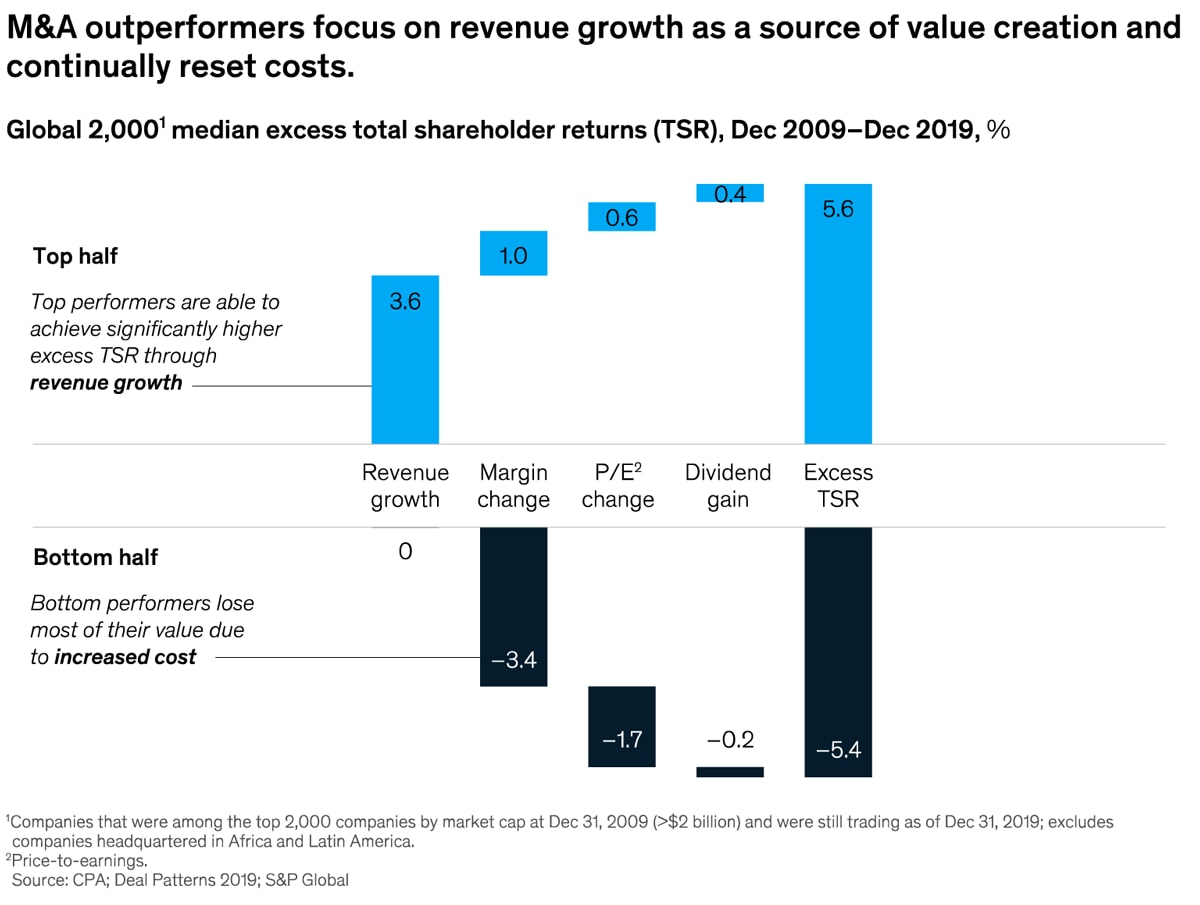
See today’s chart 
Also New 

Use star ratings to inform durable goods redesigns and spur growth Star ratings have outsize influence on consumers shopping for appliances and other durables. Companies can use them to initiate a cycle of better product designs, happier buyers, and sales growth. Take a 6-step approach 


Building pharma pipelines using a socioeconomic lens Harnessing advances in science and technology can deliver transformative therapies faster while reducing the socioeconomic burden of disease. Rethink challenges 


Accelerating India’s sustainability journey in chemicals To better confront climate change, chemical companies should take a holistic approach to ESG and aim to improve performance on environmental metrics. Read the report 


Follow our thinking 



Share these insights Did you enjoy this newsletter? Forward it to colleagues and friends so they can subscribe too.
Was this issue forwarded to you? Sign up for it and sample our 40+ other free email subscriptions here.This email contains information about McKinsey’s research, insights, services, or events. By opening our emails or clicking on links, you agree to our use of cookies and web tracking technology. For more information on how we use and protect your information, please review our privacy policy. You received this email because you subscribed to the Daily Read newsletter. Manage subscriptions | Unsubscribe Copyright © 2022 | McKinsey & Company, 3 World Trade Center, 175 Greenwich Street, New York, NY 10007
by "McKinsey Daily Read" <publishing@email.mckinsey.com> - 07:33 - 14 Apr 2022 -
Re: in
Hello! info@learn.odoo.com
_____________________________________________________________________
Powered by Salesforce
http://www.salesforce.com/
by MD Abul Khayer - 11:55 - 14 Apr 2022 -
🎙 Webinar: Building a globally inclusive recruitment strategy with Lever + BambooHR + Hired
🎙 Webinar: Building a globally inclusive recruitment strategy with Lever + BambooHR + Hired
Register today for our online discussion on how to build a globally inclusive recruitment strategy.Hi MD,
Want to learn how the world's leading HR companies build effective, empowering global recruitment strategies with inclusivity at the center? Then register for our next webinar!
🎙 Webinar: Building a globally inclusive recruitment strategy with Lever + BambooHR + HiredDate: 28th April 2022. Time: 6.00pm UTC, 7.00pm BST, 2.00pm EST
What will you learn?
- How to establish a culture of transparency and kindness
- Ways to get the most from your HR technology
- Common inclusivity mistakes to avoid
- Strategies to help your recruiters do great work
- Proven tactics to ensure everyone in the recruitment process feels valued
Grow your headcount
without the headaches.
You received this email because you are subscribed to Marketing communications from Remote Technology, Inc.
Update your email preferences to choose the types of emails you receive.
Unsubscribe from all future emailsRemote Technology, Inc.
Copyright © 2022 Remote Technology, Inc. All rights reserved.
18 Bartol St. #1163 San Francisco California
by "Remote" <hello@remote-comms.com> - 08:02 - 14 Apr 2022 -
SmartBear Named a Leader in the IDC MarketScape 2022 Vendor Assessment Report
Read the report now!Hi Abul!
We're pleased to share some exciting news! SmartBear has been named a Leader in the IDC MarketScape: Worldwide Enterprise Automated Software Quality and Continuous Testing for Digital Execution 2022 Vendor Assessment.
If you're as intrigued as we hope you are, we invite you to take a few minutes to read an excerpt of the report highlighting SmartBear!
In the new IDC MarketScape excerpt you will learn:- The IDC MarketScape’s five key strategies for enterprise success with automated software quality.
- Global trends in automated software quality that accelerate digital transformation.
- How low-code, no/code and microservices are driving demand for modern testing approaches.
- Why SmartBear was named a Leader
Best,
Cynthia & The SmartBear Team
This email was sent by SmartBear Software, 450 Artisan Way, Somerville, MA. 02145, 617.684.2600, www.smartbear.com. We hope you found this email of interest. However, we value your privacy. If you do not wish to receive future correspondence from us, please click here to manage mail preferences.
by "Cynthia Gumbert" <cynthia@smartbearmail.com> - 02:04 - 14 Apr 2022 -
Want gender parity in your workforce? Retain and advance women early in their careers.
McKinsey&Company
Why diversity in tech matters .

Let’s get technical In the news • Digital divide. Men are 21% more likely to have internet access than women across the globe. And in the world’s least developed countries, that number rises to 52%. Closing this colossal digital gender divide—exacerbated by the COVID-19 pandemic—will require not just internet access and equipment but also access to training and education. The ongoing digital acceleration can amplify opportunities for women to get the access and training they need—especially for the new technologies that will comprise the majority of future jobs. [WEF] • #DressForSTEM. Pi Day is celebrated around the world on March 14. That’s also the day of “Dress for STEM,” an annual event celebrating women in STEM (science, technology, engineering, and math). This year marked the seventh such celebration, with participants around the world wearing purple to honor women STEM pioneers as well as past, present, and future generations of women scientists. The event is also a reminder of the stark underrepresentation of women in many STEM fields: although they make up almost half of the labor force, in 2022, women hold just 27% of all STEM careers. [WaPo] 
Most of the leaders we interviewed acknowledged that their companies have uneven early-promotions processes that perpetuate the broken rung on the career ladder for women in technical roles. 
On McKinsey.com • Off the bat. Long-term career success is crucially dependent on early promotions. And that’s exactly where McKinsey research consistently shows that women lose ground. Across all industries and roles, women hold 48% of entry-level roles and 41% of first-level manager positions. But in crucial technical fields like engineering and product management, where women hold just 34% of entry-level roles to start, just about one-fourth (26%) hold first-level manager positions. Diversity is critical in these technical roles to help debias the technologies that are such an intrinsic part of modern life. • Broken rung. To better understand the barriers that women in technical roles face around early promotions, McKinsey spoke with early-tenure individuals who work in technical roles, as well as their leaders and supervisors. We found that most companies are aware of the broken rung on this career ladder. But the majority of the people we interviewed said that their companies are not monitoring women’s advancement in these roles and lack a systematic approach to that advancement. See three enablers that can help organizations make career development easier and fairer for women in technical roles. — Edited by Justine Jablonska Repair the ladder 
Was this forwarded to you? Sign up here. Or send us feedback — we’d love to hear from you. 

Follow our thinking 


This email contains information about McKinsey’s research, insights, services, or events. By opening our emails or clicking on links, you agree to our use of cookies and web tracking technology. For more information on how we use and protect your information, please review our privacy policy. You received this email because you subscribed to the On Point newsletter. Manage subscriptions | Unsubscribe Copyright © 2022 | McKinsey & Company, 3 World Trade Center, 175 Greenwich Street, New York, NY 10007
by "McKinsey On Point" <publishing@email.mckinsey.com> - 10:12 - 13 Apr 2022 -
Author Talks: A tale of two Americas
the Daily read
Change your perspective .
Share this email 



AN ARTICLE A DAY, PICKED BY OUR EDITORS 
As much as America is the land of opportunity for many, it is also a place with great inequality. According to Tom Vozzo, CEO of Homeboy Industries, there are two Americas: “the America that most of us live in, and then the America that the poor and the marginalized—the demonized people—live in.” In a new episode of Author Talks, Vozzo talks about his journey from corporate executive to leading the world’s largest gang rehabilitation and reentry program. Hear what he has to say—and explore how we can apply these life lessons to helping disenfranchised people move forward in life. — Joyce Yoo, digital editor, New York 
Author Talks: A tale of two Americas Tom Vozzo spent 26 years as a top executive before pivoting to a nonprofit that rehabilitates gang members. The philosophies that help them reenter society, he says, would help corporate America too. Change your perspective 

Quote of the Day “Growth increases our incomes and our standards of living. It increases security and resilience, poverty alleviation, and education, so there are many positive associations. But growth touches on inequality because skills bias leads to a dispersion of income, so growth also promotes the wealth of the people at the bottom of society.” —Sven Smit, McKinsey senior partner, on creating a path to sustainable and inclusive growth in a recent episode of the Inside the Strategy Room podcast 
Chart of the Day 
See today’s chart 
Also New 

Is worker power on the rise? Quitting is up, and so are wages. As the Great Attrition persists, employer–employee dynamics appear to be changing. But who actually benefits—and how durably? Understand the moment 


Opportunities for industry leaders as new travelers take to the skies A new global survey points to a greener future for air travel. See the survey results 


How COVID-19 caused a global learning crisis The pandemic has taken a substantial toll on students’ academic progress as well as on their mental health. School systems can respond across multiple horizons to help students get back on track. Address the impacts 


Follow our thinking 



Share these insights Did you enjoy this newsletter? Forward it to colleagues and friends so they can subscribe too.
Was this issue forwarded to you? Sign up for it and sample our 40+ other free email subscriptions here.This email contains information about McKinsey’s research, insights, services, or events. By opening our emails or clicking on links, you agree to our use of cookies and web tracking technology. For more information on how we use and protect your information, please review our privacy policy. You received this email because you subscribed to the Daily Read newsletter. Manage subscriptions | Unsubscribe Copyright © 2022 | McKinsey & Company, 3 World Trade Center, 175 Greenwich Street, New York, NY 10007
by "McKinsey Daily Read" <publishing@email.mckinsey.com> - 07:08 - 13 Apr 2022 -
Forward Thinking on tech and the unpredictability of prediction with Benedict Evans
McKinsey&Company
Look ahead
Share this email 



New from McKinsey Global Institute 
Forward Thinking on tech and the unpredictability of prediction with Benedict Evans One of the tech world’s sharpest analysts talks about the frontier and how we got here, connecting the metaverse, Web3, and crypto with everyone from industrialist Henry Ford to writer Voltaire to historian Hugh Trevor-Roper. Look ahead 


Explore this and future episodes of the McKinsey Global Institute’s Forward Thinking podcast on our site, and subscribe to ensure you never miss a new one. Subscribe via Apple Podcasts, Google Podcasts, Spotify, and Stitcher. 
Related Reading 
The enduring power of engineering in a digitizing world with Hayaatun Sillem 

My Rookie Moment: Watch episode 7 


Follow our thinking 


McKinsey Insights - Get our latest
thinking on your iPhone, iPad, or Android

This email contains information about McKinsey’s research, insights, services, or events. By opening our emails or clicking on links, you agree to our use of cookies and web tracking technology. For more information on how we use and protect your information, please review our privacy policy. You received this email because you subscribed to our McKinsey Global Institute alert list. Manage subscriptions | Unsubscribe Copyright © 2022 | McKinsey & Company, 3 World Trade Center, 175 Greenwich Street, New York, NY 10007
by "McKinsey Global Institute" <publishing@email.mckinsey.com> - 04:58 - 13 Apr 2022 -
What can 3-D printing do for you? A lot, it turns out.
McKinsey&Company
Take advantage of 3-D printing .

The promise of 3-D printing In the news • Rush into print. More companies are using additive manufacturing, aka 3-D printing, to make parts and products that consumers can use. The technology dangles the promise of solving supply chain and sustainability challenges, while making it easier to personalize products (think 3-D-printed dentures or implants) and lower the cost of innovation. One CEO of a 3-D printing company believes the technology will bear much fruit in the coming decade. [Fast Company] • Home, sweet printed home. 3-D-printed house frames require far less labor and a simplified supply chain, making them a promising solution for affordable housing. A handful of companies and NGOs are already using the technology, but it may take five to ten years before it becomes commonplace. Don’t expect all home-building costs to plummet: windows, plumbing, HVAC, and electrical systems will still require custom labor. [PBS] 
Manufacturers must build the skills, processes, and business models needed to make additive manufacturing shine in the industrial world. 
On McKinsey.com • Decades of progress. Additive manufacturing (AM) has been a long time coming: the first commercial machines were developed 40 years ago. By 2020, the sector had grown into a €13.4 billion industry with a 22% annual growth rate and 200-plus companies developing new hardware, software, and materials. Parts can now be made faster, from a wider range of materials (including high-strength aluminum alloys and medical-grade polymers), and with more sophisticated, AI-supported systems. • Dimensional improvements. Faster machines, better materials, and smarter software will help make 3-D printing a realistic solution for many real-world applications. One standout sector already demonstrates the industry’s potential: the medical-devices industry, where AM technologies are now applied routinely to produce prosthetics and implants. As AM works out issues that concern manufacturers—including slow printing speeds and expensive materials—more industries are likely to follow suit. — Edited by Katy McLaughlin Read the fine print 
Was this forwarded to you? Sign up here. Or send us feedback — we’d love to hear from you. 

Follow our thinking 


This email contains information about McKinsey’s research, insights, services, or events. By opening our emails or clicking on links, you agree to our use of cookies and web tracking technology. For more information on how we use and protect your information, please review our privacy policy. You received this email because you subscribed to the On Point newsletter. Manage subscriptions | Unsubscribe Copyright © 2022 | McKinsey & Company, 3 World Trade Center, 175 Greenwich Street, New York, NY 10007
by "McKinsey On Point" <publishing@email.mckinsey.com> - 10:16 - 12 Apr 2022
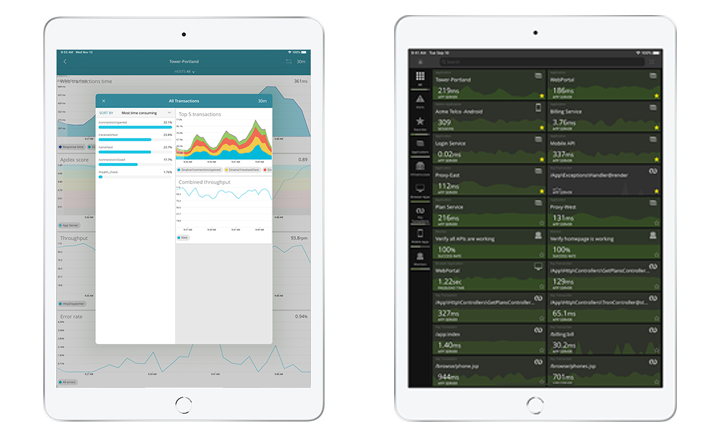
.png?width=1200&upscale=true&name=Group%201%20(6).png)



